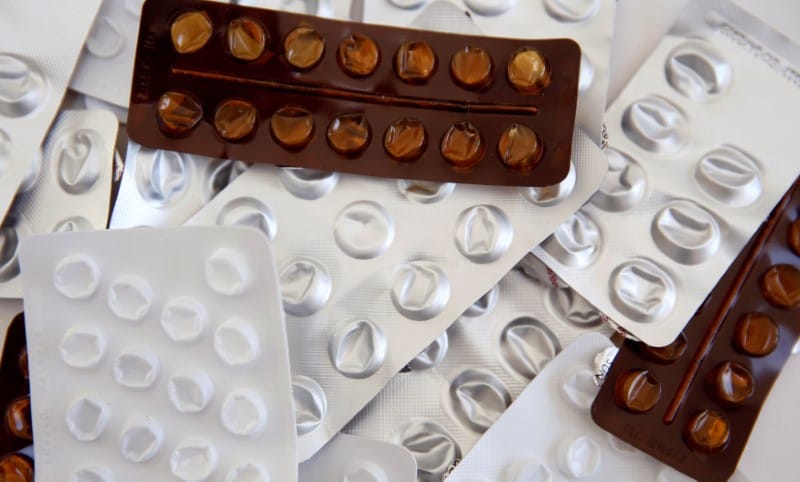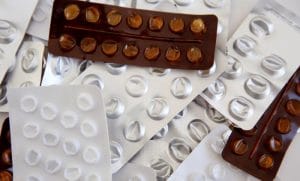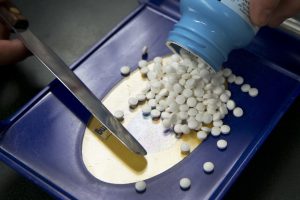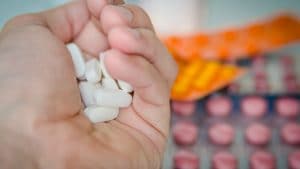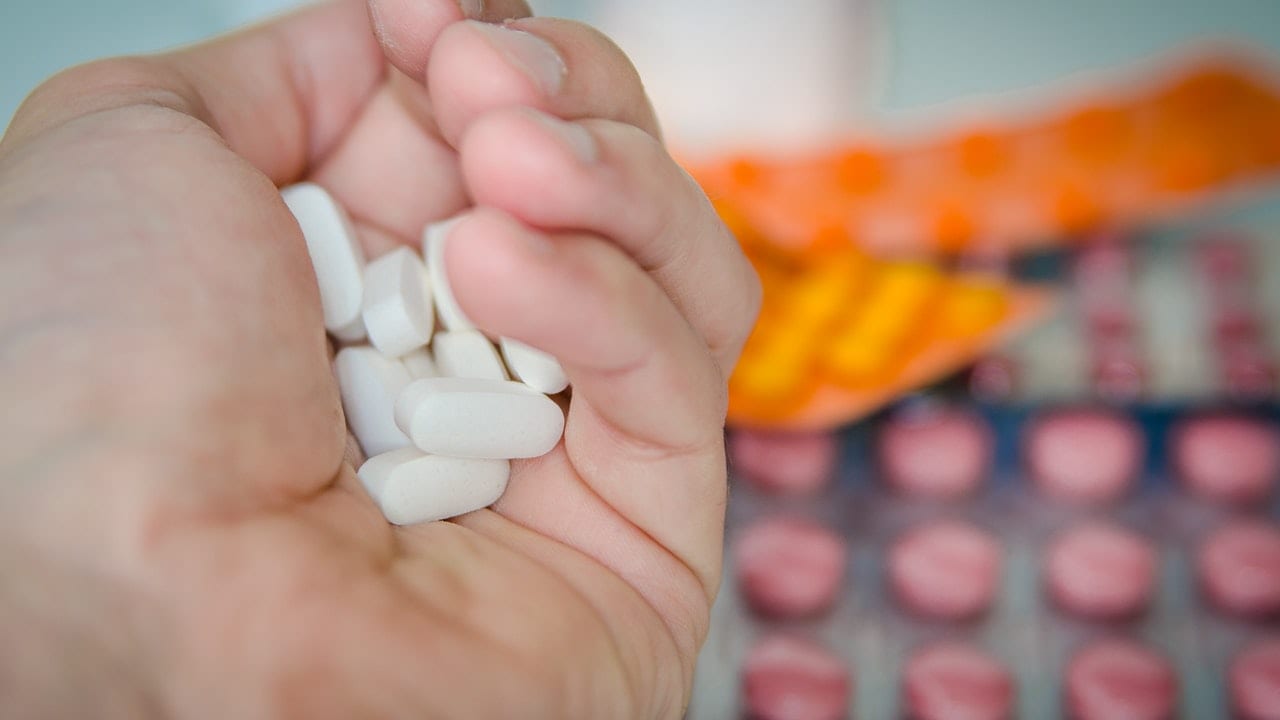How Natco defied the odds to rise up India’s pharma ladder

KV Prasad Jun 13, 2022, 06:35 AM IST (Published)
 Listen to the Article (6 Minutes)
Listen to the Article (6 Minutes)
Summary
For the second year in a row, drugmaker Natco Pharma has rewarded its employees with a one-time special bonus even as peers, both large and small, are tightening their purse strings besieged with pricing pressure in the US coupled with lacklustre growth in domestic formulation market. The bonus payout coincides with Natco’s dream run with profits and …
Continue reading “How Natco defied the odds to rise up India’s pharma ladder”
For the second year in a row, drugmaker Natco Pharma has rewarded its employees with a one-time special bonus even as peers, both large and small, are tightening their purse strings besieged with pricing pressure in the US coupled with lacklustre growth in domestic formulation market.
The bonus payout coincides with Natco’s dream run with profits and sales for the consecutive year.
In FY17 – the net profit rose three-fold to Rs 486 crore on year-on-year basis, and in FY18 it further jumped 43% to Rs 695 crore against a Rs 2,242-crore revenue. EBITDA margins stood at 33.5% and 43.2% in the last two years respectively — the highest among the peers.
Natco reaped those profits and margins on the back of windfall gains it made on 180-day marketing exclusivity of generic Tamiflu in FY17 and limited competition of generic Copaxone in US.
Roche’s Tamiflu generically called as Oseltamivir is an antiviral drug to treat flu caused by influenza virus, Teva’s blockbuster drug Copaxone called Glatiramer Acetate is used in treatment of multiple sclerosis.
Copaxone is expected to deliver another windfall in FY19 for Natco, before tapering-off slowly in FY20 with the launches from other generic rivals.
That windfall hasn’t come easy. It came with a decade of trials and tribulations. Copaxone is considered to be highly complex and difficult to copy. The drug is built on peptide chemistry or chemically synthesising protein (biological) molecules.
One analyst even said the approval was a learning curve for USFDA itself given the characterisation challenges.
Litigation was another hurdle to scale for Natco. It had to overcome the might of Teva for which Copaxone is a cash cow. Teva pooled in all of its legal resources to block the generic’s entry as Copaxone generates 50% of the company’s profits.
Near death
Natco isn’t a new kid on the block. The company was founded in 1981 by US-returned technocrat-turned-entrepreneur Chowdary V Nannapaneni, three years before Dr Anji Reddy set up Dr Reddy’s Laboratories.
Led by Nannapaneni, a formulation scientist, the company was never short of chemistry know-how and strategies required to succeed in the generic industry. It, however, lost its way as the bet to get into bulk drugs or active pharmaceutical ingredients (APIs) failed to take-off.
Adding to that the unrelated diversification into infrastructure in the late ’90s also took away the focus of the top management. Though the company won a bid to set up port at Krishnapatnam in Nellore district of Andhra Pradesh, it had to shelve the project due to financial difficulties.
“They were far ahead of every other company in sustained and controlled release formulation technologies at one point of time, they developed popular brand medication called Coldact. They mastered the pellet technology (the drug release is faster in pellet), they were doing pretty well,” said Srinivas Lanka, pharma consultant who has had large stints at several large Indian drug makers.
“Somewhere in 1998-99, they became ambitious — they got into bulk drugs, biotechnology through fermentation plant. They established vitamins manufacturing plant near Chennai, put up major R&D centres in Hyderabad. They got into diversification with Krishnapatnam port development. The growth that they were expecting, however, didn’t come through. They had a lot of problems with bankers, they became NPA,” Lanka said.
The company was on the verge of being referred to the Board for Industrial and Financial Reconstruction (BIFR). A change in business strategy with some financial re-engineering lent the company a new lease of life. The company sold off its key brands to Sun Pharma in 1998, and became a contract manufacturer.
Lanka was executive director at Sun Pharma when the sale took place.
“Nannapaneni was a benevolent man. People loved working for him and in all those difficult years he never fired anyone,” Lanka added.
The recovery was a slow and painful process. Even as its counterparts Dr Reddy’s, Aurobindo Pharma and Divis Labs surged ahead becoming billion dollar companies in sales in the ensuing decade, Natco remained stagnant.
Recovery and growth
But it was Nannapaneni’s son Rajeev who changed the direction of the company. The Tufts University graduate joined Natco in 2000, put an end to company’s diversification plans and decided to re-enter formulation business taking advantage of the injectable plant at Nagarjuna Sagar, then part of Andhra Pradesh.
To make a mark in the highly competitive domestic formulation business Natco decided to pursue oncology, which is considered to be specialty therapeutic area with fewer competitors but largely catering to institutional business.
There was no way to catch up with rivals in generics business who were deep-pocketed and years ahead in the US market. Instead, Natco decided to focus on development of generic portfolio leaning towards complex generics and litigation-heavy para-IV filings.
In order to mitigate high litigation costs, regulatory filings and distribute the drugs in US, Natco entered into partnerships with big generic drugmakers on profit sharing basis. For generic Copaxone it partnered with Mylan, generic Tamiflu – Alvogen, generic Lanthanum Carbonate – Lupin and generic Doxil – Dr Reddy’s.
“Our whole model is litigation funded by partners,” Rajeev once said.
It’s first success in the domestic market came with Veenat, the generic version of Swiss multinational Novartis’ anti-cancer drug Gleevec in India at one-tenth the cost of the listed price. The next success was in 2013 when it beat Novartis in its patent protection battle for the drug.
Natco’s comeback strategy somewhat mirrors that of Sun Pharma’s Dilip Shanghvi’s — to focus on oncology to deliver industry-beating margins.
It’s no surpise that Rajeev considers Shanghvi as his inspiration in the industry. Shanghvi holds a 3.12% in Natco as on March 31, 2018, in his personal capacity. Shanghvi bought 3.5% stake for Rs 25 crore in Natco in 2011 by subscribing to company’s Rs 67.5 crore QIP meant to fund the development of Copaxone.
In today’s value, Shanghvi’s investment is now worth around Rs 437 crore
appreciating five-fold in a span of seven years.
Prolific litigant
The year 2012 was a watershed moment for Natco. The company won compulsory license from Indian patent office to produce and sell a generic version of Bayer’s patented cancer treatment Nexavar in India at a fraction of the price charged by the German firm.
The patent office, exercising one of the flexibility in the WTO’s agreement on intellectual property, granted compulsory license citing the life-saving drug was not available at a reasonably affordable price in the country.
Indian patent office decision became global headlines with MNCs and developed nations deriding India, while healthcare activists and patients groups hailing the decision in the interests of patients dying without access to life-saving drugs.
Nexavar revenues aren’t big contributor for Natco, but they brought it a wide coverage from western press, much of it negative.
Natco won yet another patent challenge in January 2015 — this time India’s patent office had rejected an application from US-based Gilead Sciences for its Hepatitis C drug Sovaldi, paving the way for local drug makers to launch cheaper generic versions of the USD 1,000-a-pill medicine in the US.
The application had been opposed by Natco and New York-based Initiative for Medicines, Access & Knowledge (I-MAK) on the grounds that the drug, chemically called Sofosbuvir, is not inventive enough compared with a previous formulation.
A year later, the Indian patent office revoked its earlier decision and granted patent on Sovaldi. The damage was done to Gilead.
Gilead licensed the drug to 11 generic manufacturers including Natco in India for distribution of the drug in 101 developing countries. Now the drug sells at USD 14 a pill. Natco now is among India’s top-3 players in Hepatitis-C segment.
What next for Natco?
There are a few windfall opportunities in the pipeline like generic version of Celgene’s chemotherapy drug Revlimid and generic Nexvar but they may take easily another 2-3 years for launch.
Natco knows that the current party can’t go on forever and it’s foolish to hedge all its bets on US, given the cutthroat competition, price erosion and channel consolidation in that market. Moreover, Natco’s isn’t as large as some of India’s big drugmakers to be able to play the commodity game.
The Natco management indicated that beyond FY19 it is looking to significantly ramp up revenues from emerging markets especially from the three markets of India, Canada and Brazil to make up for the loss in revenues and profits from generic Tamiflu and generic Copaxone.
The company recently raised Rs 915 crore of funds via QIP. The proceeds of the QIP has been utilised to pay off certain debts and fund some amount of capex for the company.
“We’re probably one of the first ones to say that we want to de-emphasise the US. We did that almost 12 months ago. And we largely focus our strength on these three markets (India, Canada and Brazil). I think we’re going to see a lot of this coming to fruition,” Rajeev said
The company said it looking for acquisitions to expand in the three chosen markets, even as it hones its complex pipeline in its R&D labs targeting US market.
Analysts are buying Natco’s story.
“With proven R&D capabilities post successful launch of multiple complex generics and a much stronger balance sheet, Natco has now created a strong platform to make relatively aggressive investments (vs the past) to move into the next growth orbit. Along with Copaxone, anticipated launches of Nexavar and Revlimid accompanied with the scale-up in India and RoW markets will keep up the earnings momentum over the next 3-5 years,” said IDFC Securities in its report.
Disclaimer: The views and investment tips expressed by investment experts are their own and not that of the website or its management. Users are advised to check with certified experts before taking any investment decisions.
Source: Moneycontrol.com

Elon Musk forms several ‘X Holdings’ companies to fund potential Twitter buyout
3 Mins Read
Thursday’s filing dispelled some doubts, though Musk still has work to do. He and his advisers will spend the coming days vetting potential investors for the equity portion of his offer, according to people familiar with the matter

KV Prasad Journo follow politics, process in Parliament and US Congress. Former Congressional APSA-Fulbright Fellow



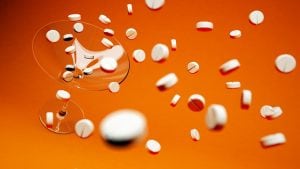






 Listen to the Article
Listen to the Article  Daily Newsletter
Daily Newsletter





